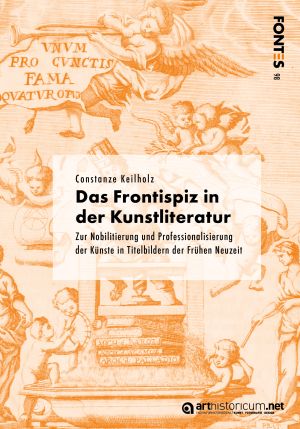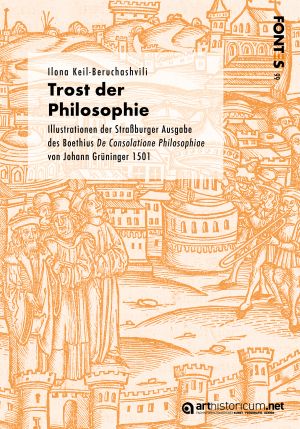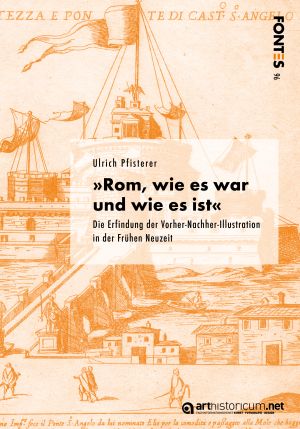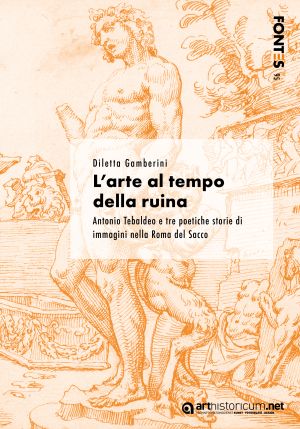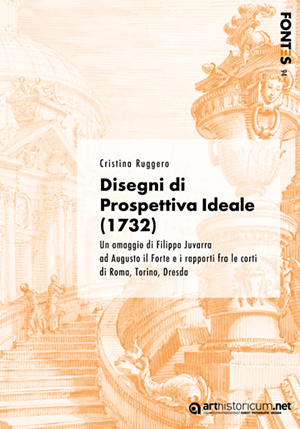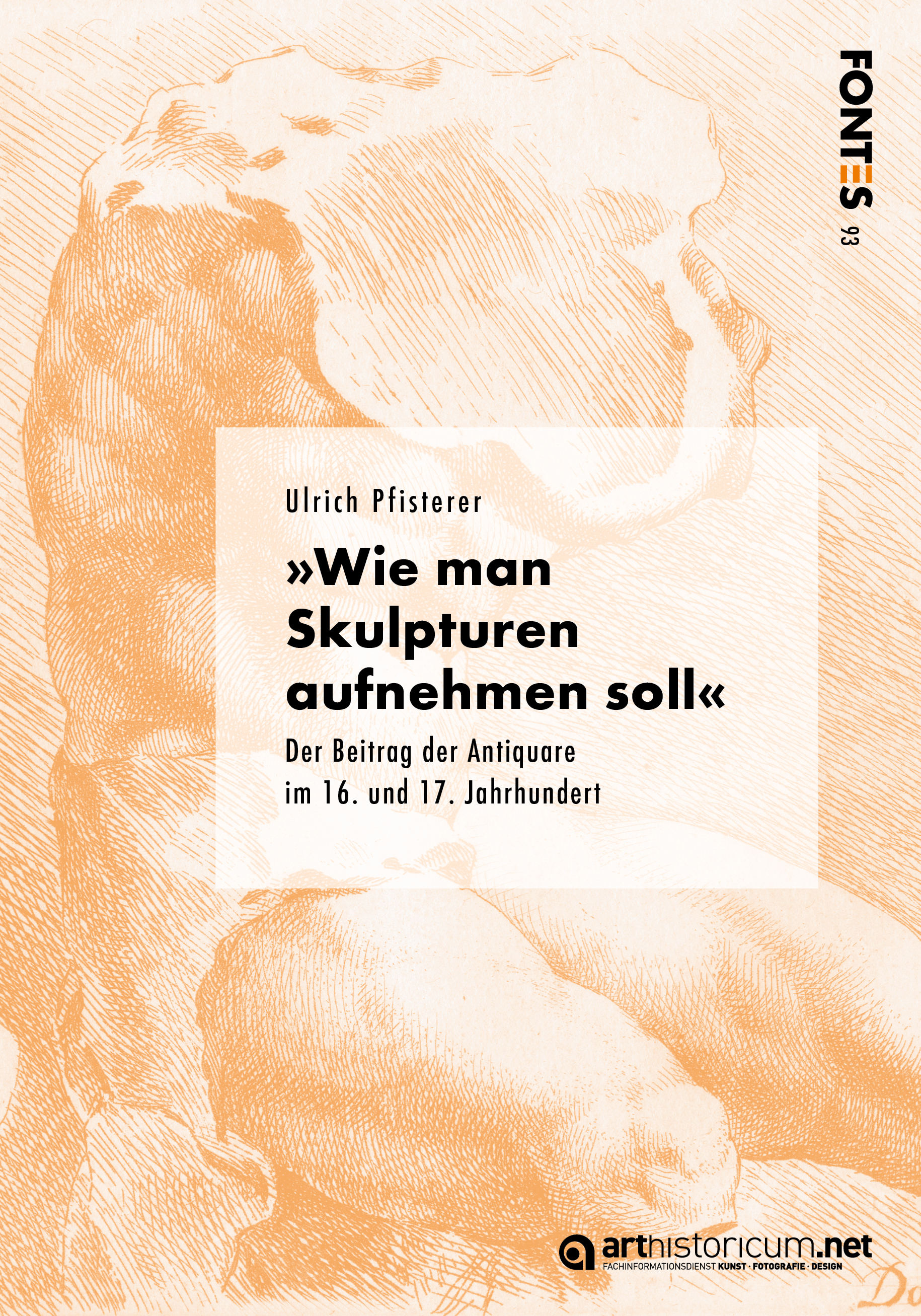FONTES
Text- und Bildquellen zur Kunstgeschichte 1350-1750
FONTES provides annotated full-text versions and image documents on early modern discussions of art and artifacts in the broadest sense.
This includes not only all text genres that Julius von Schlosser included in his standard work "Die Kunstliteratur" (1924), but also, for example, antiquarian literature, archival sources, poems, commentaries, passages from lexical and encyclopedic works.
Particular emphasis is also placed - especially since the relaunch of FONTES (and thus a change of subtitle) in 2022 and from No. 93 onwards - on the importance of pictorial documents, i.e. publications consisting largely or entirely of pictorial plates on collections, patterns, art instruction, reception of antiquities, and the like.
FONTES thus works on a critical reformulation of Schlosser's project; the diversity and Europe-wide interconnectedness of art discourse and its meaning are to be comprehensively explored.
Further information about FONTES and its volumes you can find on arthistoricum.net.

Editors
Ulrich Pfisterer
Ludwig-Maximilians-Universität München
Institut für Kunstgeschichte
Zentnerstr. 31
80798 München
Margaret Daly Davis
Kunsthistorisches Institut in Florenz
Via Giuseppe Giusti 44
I-50121 Florenz
Coming Soon
Das Frontispiz in der Kunstliteratur
Frontispieces in early modern art literature were used primarily to visually stage the profession of the artist-author and the book as a carrier of knowledge about art. Through the interaction of personifications, art theoretical, didactic and moral considerations were depicted. The motifs participate in contemporary visual discourses. During the 16th century, a pictorial language with a pan-European range of influence developed, which remained valid until the 18th century. This study examines topoi that shaped the title illustration of art literature in the early modern period. This is the first comprehensive survey of the pictorial material.
Published so far
»Rom, wie es war und wie es ist«: Die Erfindung der Vorher-Nachher-Illustration in der Frühen Neuzeit
What did the ruins of Rome look like when they were built in antiquity? For centuries, antiquarians and artists of the early modern period tried to create an idea of the ancient Urbs and its monuments in text and image. This paper examines when and how a print mode of representation developed that somewhat systematically contrasts the reconstructed state of the buildings with their ruins - a principle referred to here as before-and-after illustration. After isolated examples in the second half of the 16th century - above all by Étienne Dupérac and his circle - and less successful publications by Giovanni Maggi and Pietro Paolo Orlandi, it was only the illustrated editions of Alessandro Donati's widely published bestseller Roma vetus ac recens from 1662 that achieved the breakthrough. The history of its impact, as well as alternative modes of representation, is being traced into the 19th century.
L’ arte al tempo della ruina: Antonio Tebaldeo e tre poetiche storie di immagini nella Roma del Sacco
This contribution focuses on three sequences of Neo-Latin epigrams, unpublished to date, which poetically evoke the vicissitudes of three works of art during the Sack of Rome (May 1527-February 1528). Composed by a direct witness to the violences that rocked the city during those months, the Ferrarese poet Antonio Tebaldeo, the texts help clarify the intellectual profile of an author who nurtured a profound and enduring interest in the arts of his time. The main result of the inquiry, however, lies elsewhere. Contextualized by means of a systematic comparison with the writings of other humanists who commented on the Sack, these epigrammatic series illuminate hitherto unknown events which involved patrons, artists and objects among the most illustrious of the Rome of Pope Clement the Seventh, as well as an episode of profanation that had considerable literary resonance at the time. Specifically, the studie elucidates how Tebaldeo evoked in these poems the fate of a portrait of Ferrante Gonzaga that the young imperial captain commissioned as a gift for his mother, Isabella d'Este, but also the desecration inflicted by a Spanish soldier against a painted image of a Madonna with Child, and finally the vicissitudes - hitherto completely unknown -that befell Michelangelo's Bacchus.
Il presente contributo si incentra su tre sequenze di epigrammi neolatini, ad oggi inedite, che evocano poeticamente le storie di altrettante opere d’arte durante il Sacco di Roma (maggio 1527 – febbraio 1528). Composti da un testimone diretto delle violenze che sconvolsero l’Urbe in quei mesi, il poeta ferrarese Antonio Tebaldeo, i testi precisano il profilo intellettuale di un autore che nutrì un profondo e duraturo interesse per le vicende artistiche del proprio tempo. La principale acquisizione del presente studio risiede tuttavia altrove. Fatte oggetto di una puntuale contestualizzazione, per mezzo del raffronto con altri scritti coevi di umanisti che commentarono le vicende del Sacco, queste serie epigrammatiche illuminano vicende finora ignote ma che coinvolsero committenti, artisti e oggetti tra i più illustri della Roma di età clementina, come pure un episodio di profanazione che all’epoca ebbe una notevole risonanza letteraria. Nello specifico, lo studio chiarisce come Tebaldeo evocasse in questi versi le sorti di un ritratto di Ferrante Gonzaga che il giovanissimo condottiero imperiale commissionò come dono per la madre, Isabella d’Este, ma anche l’oltraggio inflitto da un soldato spagnolo ai danni di un’immagine mariana, e infine le vicissitudini – fino a questo momento del tutto sconosciute – toccate al Bacco di Michelangelo.
Disegni di Prospettiva Ideale (1732): Un omaggio di Filippo Juvarra ad Augusto il Forte e i rapporti fra le corti di Roma, Torino, Dresda
In the spring of 1732 Filippo Juvarra sent from Rome an album with 41 Disegni di Prospettiva Ideale meant for August the Strong, prince-elector of Saxony and king of Poland. Bearer of the gift was Antonio Giuseppe Gabaleone Count of Wackerbarth Salmour – the Turin nobleman naturalized in Saxony – who at that time was in the papal city on a secret mission on the king’s behalf.
The album preserved in the Kupferstich-Kabinett of Dresden celebrates the exemplarity of Rome over the centuries. Through its themes, its staged compositions, and its graphic technique, an evocative narration unfolds – a further confirmation of Juvarra's multifaceted qualities as a great director of the arts.
The drawings are here analyzed as a whole for the first time, together with some unpublished letters that help shed light on an artistic exchange involving the courts of Rome, Turin and Dresden.
»Wie man Skulpturen aufnehmen soll«: Der Beitrag der Antiquare im 16. und 17. Jahrhundert
Since the years around 1500, there have been printed reproductions of ancient statues and other monuments of antiquity. After a long period of mainly investigating which works these prints represent, interest is now increasingly turning to how they do so.
This paper examines when and in what contexts ancient works began to be systematically reproduced from multiple views in the 16th and 17th centuries. The antiquarian, and not only the artistic, preoccupation with antique sculptures made a decisive contribution to 'multiple views' and 'documentary modes of representation'. Unusual antique works from Egypt, for example, or non-European figures of gods and 'idols' required innovative illustrations from several perspectives.
It was not until the 19th century that new forms of reproduction of sculpture were to be experimented with and their use discussed - right up to Heinrich Wölfflin's reflections on "how to photograph sculpture", which were geared towards photography.



